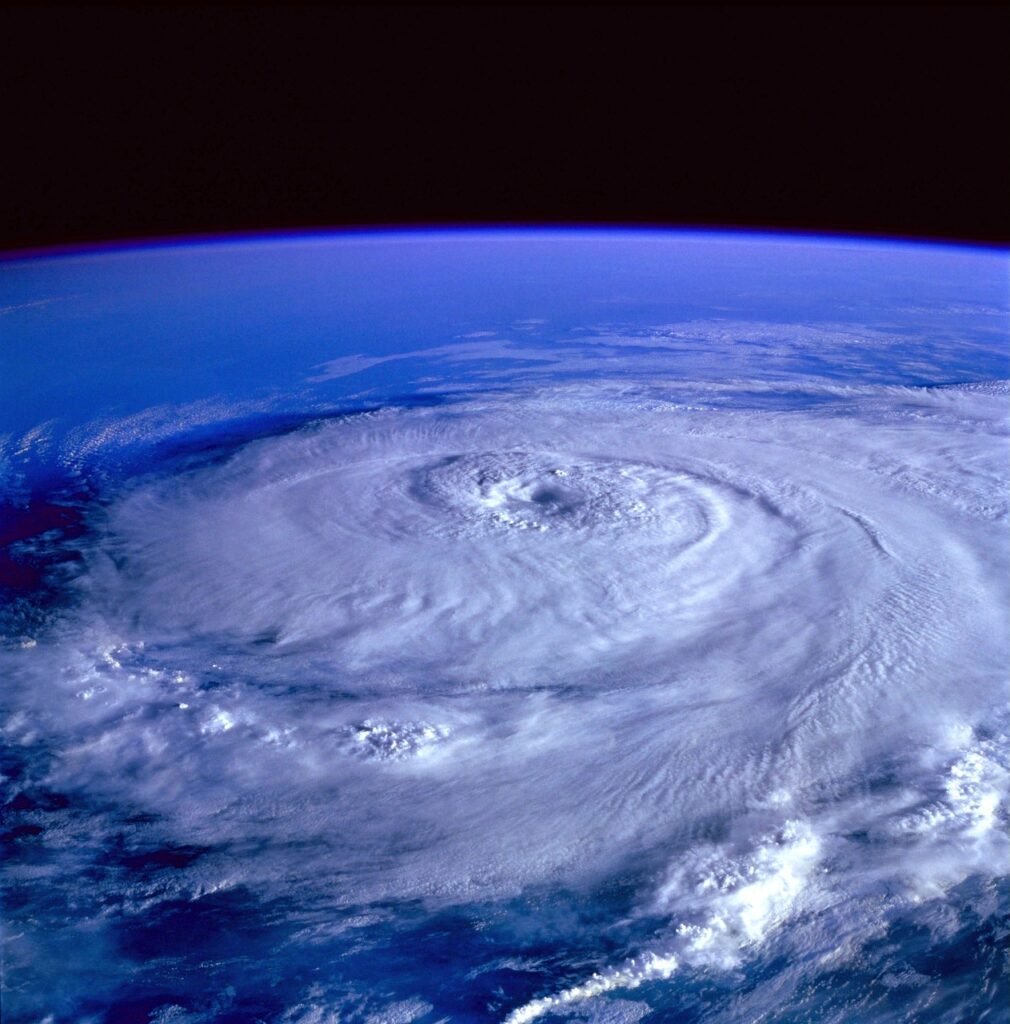Introduction to Earth Science
earth science the physical setting answer key is a vast field dedicated to understanding the various aspects of our planet and its position in the universe. As a scientific discipline, it encompasses the study of the Earth’s physical characteristics, processes, and history. This field is inherently interdisciplinary, integrating knowledge from other scientific areas to provide a comprehensive understanding of how Earth systems operate and interact.
The study of Earth Science is of paramount importance not only for academic purposes but also for its practical applications in addressing environmental challenges, natural resource management, and mitigation of natural disasters. Key branches of Earth Science include geology, meteorology, oceanography, and astronomy, each focusing on different components of the Earth system.
Geology examines the solid Earth, including its rocks, minerals, and the processes that shape the planet over geological time scales. Meteorology, on the other hand, focuses on the atmosphere and weather systems, analyzing patterns and phenomena that influence our daily weather and broader climate trends. Oceanography delves into the study of Earth’s oceans, exploring everything from ocean currents and marine ecosystems to the chemistry of seawater. Lastly, astronomy extends our scope beyond the Earth, studying celestial bodies and the universe, helping us understand our planet’s place within a larger cosmic context.
The integration of these various branches forms the foundation for understanding the physical setting of Earth Science. It provides essential insights and answer keys to the intricate workings of the planet, helping scientists and researchers tackle critical issues such as climate change, natural disaster prediction, and resource sustainability. As we delve deeper into Earth Science, we unlock more profound understandings of both our planet and our role within its dynamic systems.
Components of the Physical Setting

Earth Science centers around the understanding of the Earth’s physical setting, a multifaceted system comprising the atmosphere, lithosphere, hydrosphere, and biosphere. Comprehending these components and their interrelations is crucial for deciphering Earth’s complex environment.
The atmosphere envelops our planet, serving as the protective layer of gases that sustains life. Composed chiefly of nitrogen, oxygen, and trace amounts of other gases, it regulates temperature and shields the surface from harmful solar radiation. Beyond climatic control, the atmosphere plays a critical role in weather patterns and is an integral component explored in Earth Science studies.
Next is the lithosphere, signifying the solid, outer section of the Earth, comprising the crust and the upper mantle. It is divided into tectonic plates that float on the semi-fluid asthenosphere beneath. The movements of these plates are responsible for continental drift, earthquakes, and the formation of various geological features such as mountains and ocean basins. Understanding the lithosphere is fundamental for insights into our planet’s geological history and dynamic processes.
The hydrosphere encompasses all water bodies on Earth, including oceans, rivers, lakes, and even underground water systems. Water is essential for all known forms of life, making the hydrosphere a critical component of the physical setting. This sphere interacts with other components in processes like the water cycle, which drives weather patterns and climate. Studies into the hydrosphere reveal important details about the distribution and movement of water resources, as well as its role in sustaining ecosystems.
Finally, the biosphere consists of all living organisms on Earth and the ecosystems in which they reside. This sphere is interconnected with the atmosphere, lithosphere, and hydrosphere, highlighting the intricate balance of Earth’s physical environment. The biosphere affects and is affected by climatic and geological changes, demonstrating the symbiotic relationship between life and the physical setting.
Comprehending these primary components—atmosphere, lithosphere, hydrosphere, and biosphere—provides a robust foundation for navigating the Earth Science the physical setting answer key. It enables learners to appreciate the dynamic and interconnected nature of our planet, fostering a deeper understanding of the environmental conditions essential for life. The holistic grasp of these components underscores the significance of Earth Science in addressing contemporary environmental challenges.
Key Concepts in Earth Science

Earth science encompasses diverse critical areas that form the foundation of our understanding of the planet. Among these, plate tectonics stands out as a cornerstone concept. This theory explains the movement of Earth’s lithospheric plates over the asthenosphere. For instance, the Pacific Plate’s movement causes significant seismic activity along the Ring of Fire. Understanding plate tectonics helps elucidate the formation of mountains, earthquakes, and volcanic eruptions, making it indispensable in the earth science the physical setting answer key.
Equally significant is the rock cycle, the continuous transformation of rocks through geological processes. The cycle includes the formation of igneous rocks through cooling magma, sedimentary rocks from accumulated sediments, and metamorphic rocks from existing rocks altered by heat and pressure. An example is granite (igneous) transforming into schist (metamorphic) under tectonic pressure. This cycle underscores the dynamic and ever-changing nature of Earth’s crust.
Weather patterns, another essential concept, involve the study of atmospheric conditions and phenomena. These patterns range from daily weather changes to long-term climatic trends. For instance, understanding jet streams—fast flowing air currents in the upper atmospheres—helps meteorologists forecast weather conditions. This knowledge is crucial for preparing for and mitigating the impacts of extreme weather events, which are a frequent focus in earth science curricula.
Ocean currents, the continuous, directed movement of seawater, also form a vital component of earth science. These currents, driven by wind, water density differences, and tides, significantly impact global climate by redistributing heat across the planet. The Gulf Stream, for example, carries warm water from the Gulf of Mexico across the Atlantic, influencing the climate of Western Europe. Recognizing these patterns is key for understanding global weather systems and climate changes.
These core concepts—plate tectonics, the rock cycle, weather patterns, and ocean currents—serve as fundamental building blocks in Earth science. Being well-versed in these areas not only aids in academic endeavors but also enriches one’s appreciation of the intricate and dynamic processes that shape our planet.
Using the Earth Science Answer Key
An answer key is an invaluable resource for students pursuing a deeper understanding of Earth Science. When employed correctly, it can do much more than simply provide solutions to problems. It can illuminate processes, clarify concepts, and enhance overall comprehension. To maximize its benefits, it is essential to utilize the Earth Science: The Physical Setting Answer Key strategically.
First and foremost, use the answer key to verify your responses after attempting to solve problems independently. Relying too heavily on the key without first trying to answer the questions can obstruct genuine learning. By challenging yourself to work through problems initially, you force your brain to engage with the material actively. Once you have attempted the problems, consult the answer key to check your answers. This practice ensures that you identify any mistakes and understand where your thinking may have been misguided.
Another practical approach is to delve deeper into why an answer is correct or incorrect. Instead of accepting the answer at face value, use the key to explore the underlying principles of Earth Science that inform the solution. This technique nurtures a higher comprehension level, encouraging you to grasp the fundamental concepts rather than memorize responses.
Be mindful of common pitfalls when utilizing an answer key. Over-reliance can inhibit your ability to develop independent problem-solving skills and critical thinking. Additionally, if you find that you frequently need to consult the answer key, it may be an indication that further review or study is needed in those specific areas. Use this as an opportunity to revisit the material, seek additional resources, or ask for help from a teacher or tutor.
Ultimately, viewing the Earth Science: The Physical Setting Answer Key as a learning tool rather than just a solution manual transforms your study from passive reception to active engagement. This shift in approach encourages a more profound and lasting understanding of complex topics, fostering long-term academic success in Earth Science.
Common Questions and Answer Explanations
Earth Science, an essential field of study, encompasses various aspects such as geology, meteorology, and oceanography. Understanding the subject requires a comprehensive grasp of different concepts and principles. Here, we address some recurring questions encountered in Earth Science assessments, detailing the rationale behind the correct answers to enhance comprehension.
One frequent question in Earth Science tests involves geological formations: “What processes lead to the creation of sedimentary rocks?” The correct answer hinges on understanding the sediment deposition process, where materials like sand, silt, and clay are transported by wind, water, or ice, accumulating in layers. Over time, these sediments compress and cement together under pressure, forming sedimentary rocks. The physical setting answer key for this topic would elucidate that the primary processes include weathering, erosion, transportation, deposition, and lithification.
Questions related to weather systems often delve into the dynamics of atmospheric phenomena: “How does the Coriolis effect influence wind patterns on Earth?” This query necessitates an understanding of Earth’s rotation. The Coriolis effect causes moving air masses to deflect to the right in the Northern Hemisphere and to the left in the Southern Hemisphere, influencing global wind patterns and ocean currents. The fundamental explanation includes the rotation-induced deflection, which must be covered in the Earth Science physical setting answer key to ensure clarity.
In the realm of oceanography, students might encounter questions like, “What factors contribute to the formation of ocean currents?” Here, the correct response involves the combined influence of wind, salinity, temperature differences, and the Earth’s rotation. Notably, surface currents are primarily driven by wind patterns, while deep ocean currents, also known as thermohaline circulation, result from density variations due to differing salinity and temperature. The physical setting answer key would expound on the interplay of these factors, promoting a deeper understanding.
By dissecting these example questions and their answers, students gain insight into the reasoning and principles that underpin Earth Science concepts. This methodical approach not only aids in answering test questions correctly but also strengthens overall comprehension of Earth Science’s multifaceted nature.
Study Tips for Earth Science Students
Excelling in Earth Science requires a combination of strategic study habits and a solid understanding of the core concepts. A key element in mastering this subject is effective note-taking. Utilize a system that works best for you, such as the Cornell method, which encourages active engagement with the material. Highlight important terms and draw connections between key concepts to reinforce your understanding of the subject.
Another important aspect is understanding scientific diagrams. These visual representations can simplify complex information, making it more digestible. Pay particular attention to labels and legends, as they are integral in accurately interpreting the diagrams. Additionally, practice drawing your own diagrams based on your notes—it enhances retention and aids in the comprehension of spatial relationships.
Leveraging multimedia resources can also significantly enhance your learning experience. Educational videos, interactive simulations, and online lectures can provide different perspectives and explanations of complex topics. Websites such as National Geographic and educational platforms like Khan Academy offer extensive resources that can supplement your textbook readings and class notes.
Collaboration with peers is equally vital. Group studies can provide a platform for discussion, which helps in clarifying doubts and reinforcing learning. It encourages active participation and makes the study process more engaging. Sharing and comparing notes with classmates can also reveal gaps in your understanding and provide new insights into difficult topics.
Balancing these strategies can create a comprehensive study plan, effectively preparing you to tackle the most challenging aspects of earth science the physical setting answer key. Remember to allow time for regular reviews and self-assessment to monitor your progress. Implementing these tips can lead to a more structured and enjoyable learning experience, ultimately enhancing your grasp of earth science.
Resources for Further Learning
Delving into Earth Science requires a well-rounded approach, and numerous resources can assist in extending one’s knowledge beyond the basic curriculum. Here, we present a curated list of invaluable resources tailored for students and enthusiasts aiming to deepen their understanding of Earth Science in its physical setting.
1. Recommended Textbooks: Textbooks play a foundational role in providing structured and comprehensive information. “Essentials of Geology” by Frederick K. Lutgens and Edward J. Tarbuck is highly recommended for its clear explanations and detailed illustrations. Another excellent choice is “Earth Science” by Edward J. Tarbuck and Frederick K. Lutgens, which covers a wide array of topics with an engaging approach, making complex subjects more accessible.
2. Online Courses: To further one’s education in a flexible manner, online courses are invaluable. Platforms like Coursera and edX offer courses such as “Introduction to Physical Geology” by the University of Tokyo and “The Dynamic Earth: A Course for Educators” by the American Museum of Natural History. These courses feature lectures, assignments, and assessments designed to reinforce learning.
3. Educational Videos: Visual learning can significantly enhance comprehension, and resources like YouTube are replete with educational channels. “CrashCourse” offers a series of engaging Earth Science videos that break down complex topics into digestible segments. Additionally, “National Geographic” provides high-quality documentaries that explore various Earth Science phenomena in stunning detail.
4. Interactive Simulations: For hands-on learning, interactive simulations can simulate real-world scenarios and phenomena. PhET Interactive Simulations by the University of Colorado Boulder offers free, high-quality simulations for Earth Science topics, including plate tectonics and the greenhouse effect. These tools allow learners to experiment in a virtual environment, fostering a deeper understanding through active engagement.
5. Scholarly Articles: For those interested in current research, scholarly articles offer insights into the latest scientific discoveries and theories. Journals such as “Geology” and “Earth and Planetary Science Letters” provide peer-reviewed articles on diverse topics. Access to these articles can often be obtained through academic institutions or services like Google Scholar.
Utilizing these resources can significantly enhance one’s grasp of Earth Science. Whether through structured textbooks, interactive courses, educational videos, engaging simulations, or cutting-edge research articles, each resource serves as a stepping stone to mastering the complexities of Earth’s physical processes. By integrating these tools into your study routine, you can develop a robust understanding of Earth Science and its practical implications.
Conclusion and Final Thoughts
The exploration of Earth Science and the physical setting is pivotal in understanding the complexities of our planet. Throughout this blog post, we have delved into various aspects of this scientific discipline, emphasizing the necessity of possessing a thorough grasp of foundational concepts. Utilizing resources such as the “earth science the physical setting answer key” has proven to be invaluable for both students and educators, enabling a deeper comprehension of intricate geological and atmospheric processes.
Understanding the physical setting within Earth Science is not merely about memorizing facts; it is about developing a keen insight into the dynamic systems that govern our environment. This knowledge serves as a crucial tool that can be applied in diverse fields, ranging from environmental conservation to urban planning and beyond. The interconnection between theory and real-world applications underscores the importance of a comprehensive study approach, facilitated by structured answer keys and supplementary learning materials.
Moreover, as we continue to face unprecedented environmental challenges, an informed populace equipped with solid Earth Science knowledge is essential. The utilization of answer keys not only aids in acing academic assessments but also builds a strong foundation for practical problem-solving skills. Through diligent study and the application of these resources, learners can cultivate a profound appreciation and understanding of the natural world, laying the groundwork for future scientific endeavors.
Therefore, embracing continuous learning and exploration within the realm of Earth Science can yield significant personal and communal benefits. By leveraging tools such as the “earth science the physical setting answer key,” readers are empowered to achieve academic success and contribute meaningfully to societal advancements. Stay curious, remain dedicated, and let this be the stepping stone to a lifelong journey of discovery in the fascinating field of Earth Science.

